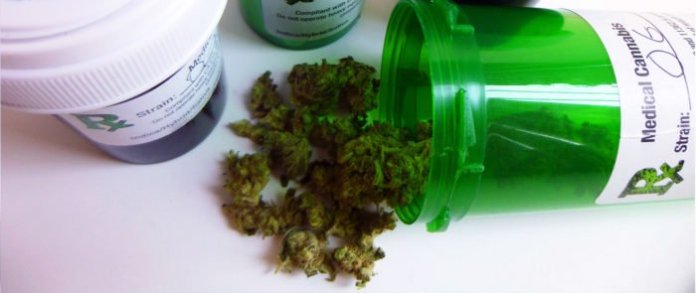Data from a new survey show that as many as 80% of oncologists have discussed medical marijuana use with their patients. According to the authors, this is the first nationally representative survey to examine oncologists’ practices and beliefs on the subject since the implementation of state medical marijuana laws. The research was published by Braun et al in the Journal of Clinical Oncology.
“Our study shows that medical marijuana is a salient topic in cancer care today, and the majority of oncologists think it may have utility for certain patients,” said study author Ilana Braun, MD, Chief of the Division of Adult Psychosocial Oncology at the Dana-Farber Cancer Institute. “While this topic is common, however, data on medical marijuana use is less so. We need to bridge this gap so oncologists have the unbiased information they need to assist with decision-making related to medical marijuana use.”
California enacted the United States’ first medical marijuana law in 1996, and today, its use is legal in more than 30 states, almost all of which list cancer as a qualifying condition. In the 22 intervening years, however, no randomized clinical trial has investigated the utility of whole-plant medical marijuana to alleviate symptoms such as pain, insomnia, or nausea and vomiting in patients with cancer.
Many studies have explored the use of pharmaceutical cannabinoids—highly refined, quality-controlled products consisting of one or two active ingredients and available through a pharmacy. Nonpharmaceutical medical marijuana, however, is often whole-plant, containing hundreds of active ingredients, and thus cannot easily be compared to pharmaceutical cannabinoids.
Recent clinical practice guidelines from ASCO recognize knowledge gaps about medical marijuana use in oncology. The guidelines note insufficient evidence to recommend medical marijuana for the initial management of chronic pain in cancer survivors, although evidence suggests it is worthy of consideration as an adjuvant analgesic and for managing pain conditions that are difficult to treat. Evidence also remains insufficient to recommend medical marijuana for the prevention of nausea and vomiting in patients with cancer who receive chemotherapy or radiation therapy.
About the Study
Researchers mailed a survey to 400 practicing oncologists in the United States, randomly selected from a national database of board-certified medical oncologists. Of the 237 participants who responded, more than half (55%) practice in states where medical marijuana is legal.
The survey asked oncologists about their discussions with patients, recommendations they provided, and their knowledge of medical marijuana. Respondents were also asked about their views on the effectiveness of medical marijuana for cancer-related symptoms such as pain, nausea and vomiting, depression, anxiety, poor appetite, poor sleep, and general coping, as well as its risks compared with other treatments.
Key Findings
Researchers found that most oncologists surveyed had encountered questions about medical marijuana, and many expressed research and education needs to better inform the care they provide to patients with cancer. Specifically:
- Physician discussions: 80% reported discussing medical marijuana with patients, and 78% reported these conversations were most frequently initiated by patients and their families.
- Education: Less than 30% felt knowledgeable enough about medical marijuana to make recommendations.
- Recommendations: Nearly half (46%) recommended medical marijuana use to patients in the past year.
- Beliefs on potential benefit: More than two-thirds (67%) believed medical marijuana to be a helpful treatment for alleviating pain when used together with standard therapies, and a majority viewed it as presenting a lower risk than opioids for overdose death (75%) and addiction (52%). Nearly two-thirds (65%) also viewed it as equally or more effective than standard treatments for poor appetite and extreme weight loss. When evaluating its effectiveness for other conditions, however, many oncologists responded, “I do not know,” from 29% for nausea and vomiting to 45% for poor sleep.
To read this entire article by The ASCO Post in The Clearity Portal, please click here.


